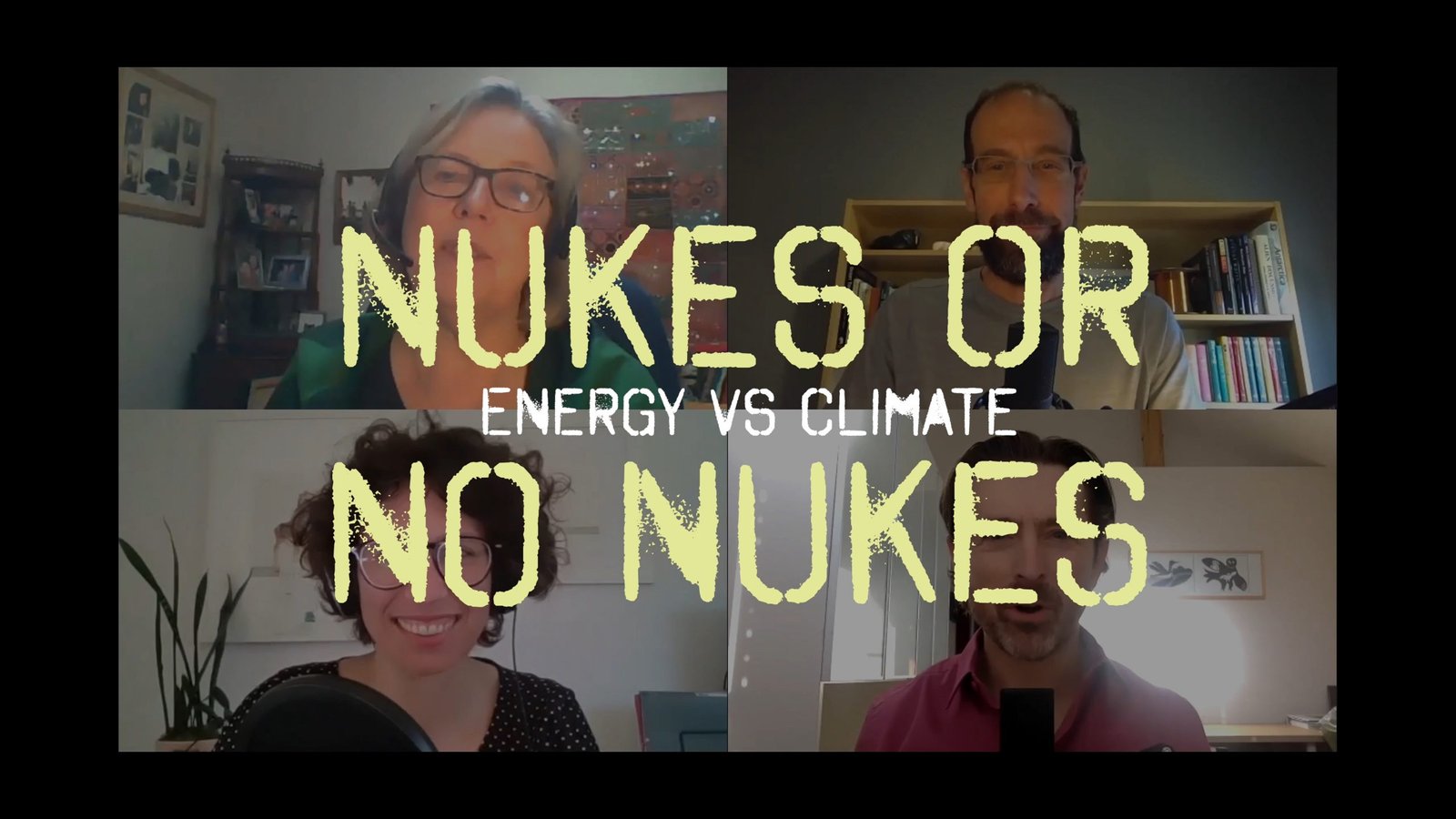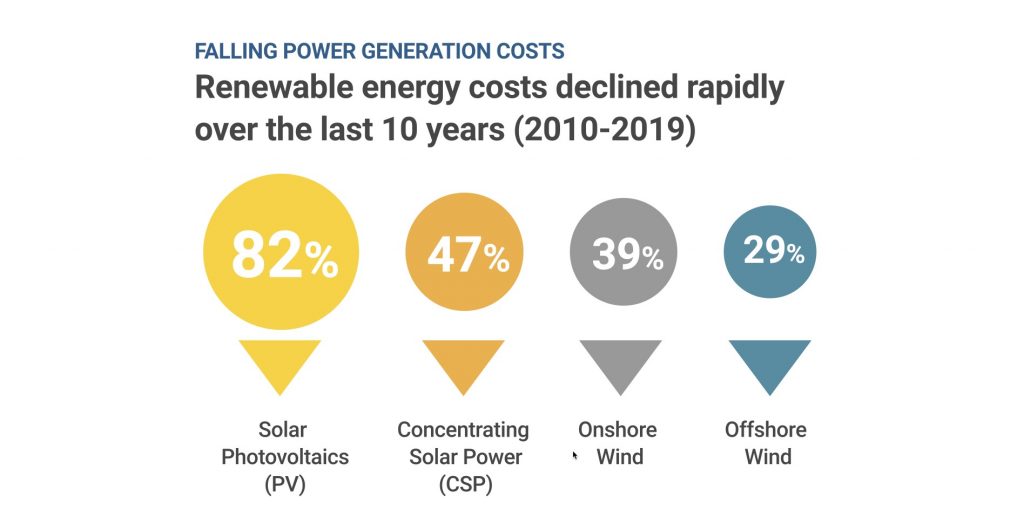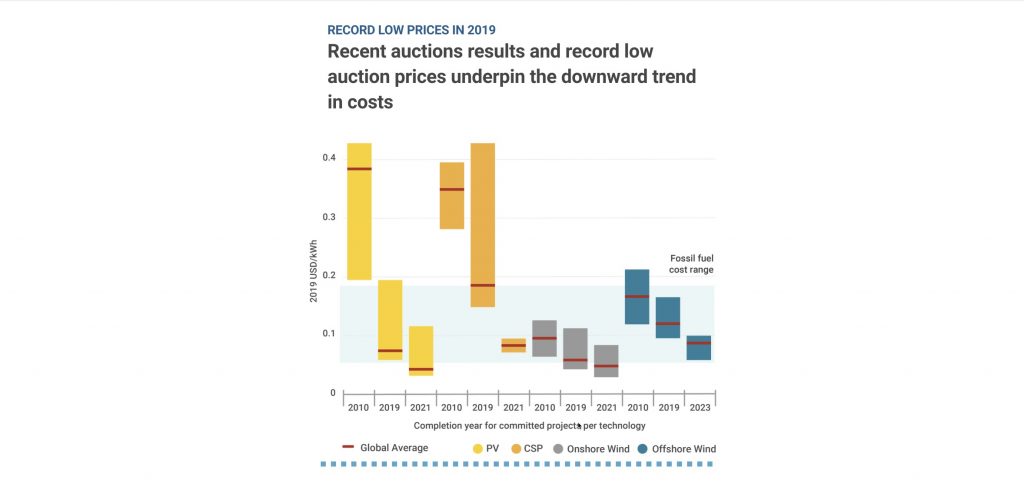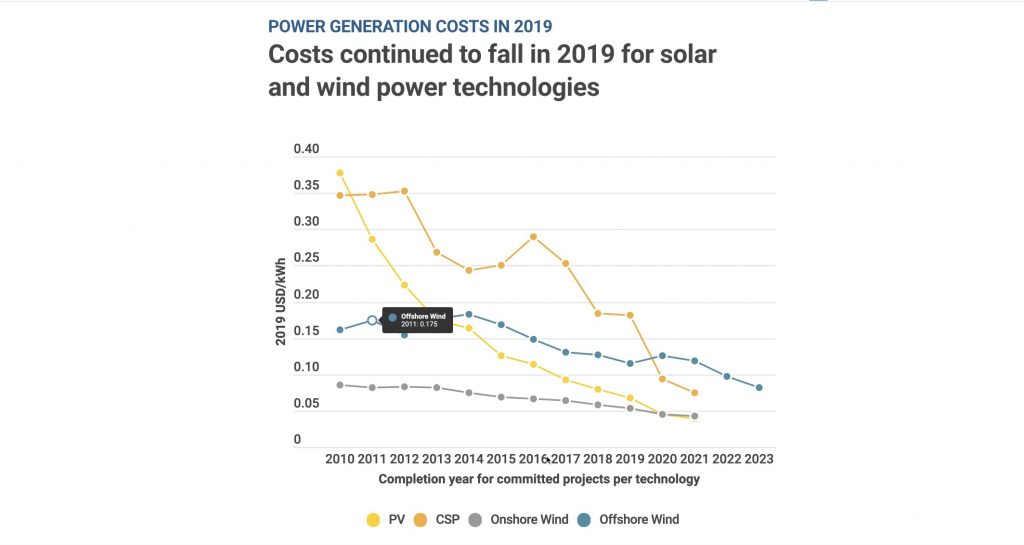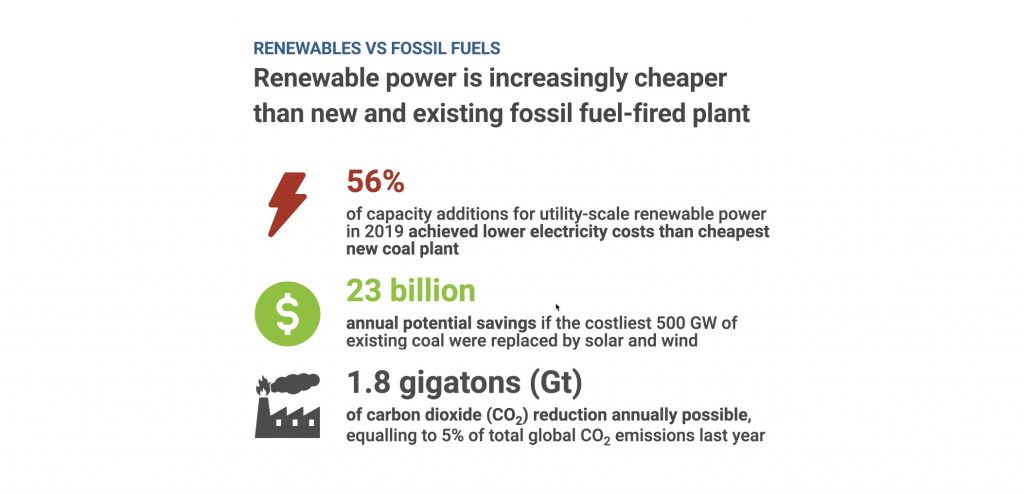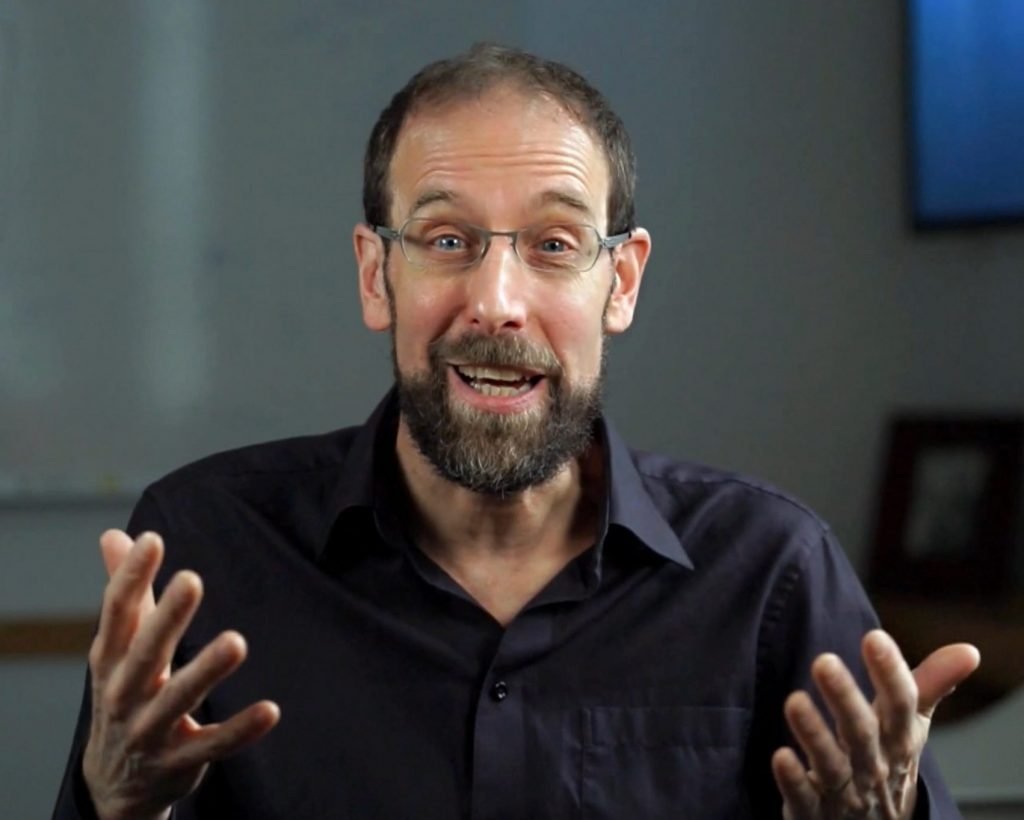
The monkeys on nuclear’s back
“Nuclear power is deeply stuck around the world with absurdly high costs, deep structural problems in the industry. At the highest level, the problems, the challenges of nuclear power are waste, cost, weapons proliferation, and reactor risk,” says Dr. David Keith as the podcast episode begins. Boom.
Keith’s frank, non-alarmist acknowledgment of the problems faced by nuclear is refreshing, but nothing new. But then a surprise: despite these challenges, Keith advocates for making nuclear part of our low-carbon future. Boom again.
It comes down to the land footprint of our energy systems. This, he says, is where nuclear shines. If you look at “full life cycle power density” (the amount of energy you get per unit of area), nuclear energy comes in at 50 to 100 watts per square meter, numbers that blow wind (at 0.6 watts per square meter) out of the water—or, rather, the air.
If that was the only information we had to look at, the decision would be simple. But as Keith’s list of challenges shows, nuclear lives in a complicated, chaotic landscape in real life. Keith and Elizabeth May also point to the political machinations and credibility issues that plague the nuclear industry in detail (listen to the Energy vs Climate podcast to hear more!).
But nuclear’s biggest problem lies in the realm of economics: it’s darned expensive.

Economics favours renewables
Cost has always been the big monkey on nuclear’s back. Keith says costs in North America and Europe are “spiraling to well over $10,000 per kilowatt installed.”
But in Asia, things are different. Prices are coming down. “We actually are completing nuclear builds in kind of eight years. And we’re doing it at prices under 5,000 bucks a kilowatt,” says Keith. “Those actually produce carbon-free, relatively safe power. And it’s not perfect, but I think we have to think hard about why we don’t want to do that.”
One reason? It’s still not cheap enough, especially when solar is clocking in as low as $1,000 per kilowatt at utility scale.
Elizabeth May says the way the Green Party of Canada evaluates the low carbon energy options is based on three factors for every dollar invested: 1) tonnes of greenhouse gases reduced; 2) jobs created; and 3) speed of implementation.
“On that analysis, you’re just going to be, every single time, way better putting your money into energy efficiency and renewable energy,” says May.
Still, Keith pragmatically says, “My argument basically is there are only two things that humanity is really going to do at large scale to decarbonize, and it’s solar or nuclear.”
In the realm of costs, Keith says its important to remember the very low costs of wind and solar must be balanced against both their land footprint and the cost of integrating them into the grid.
May points to energy storage as one way to accommodate more renewable energy. Keith added that pumped storage is actually the dominant technology right now, in spite of all the talk about batteries.
“I think there’s no question that in the near term for the next move on the chess board, solar and wind are cheaper than anything because we’re using the rest of electric power system as backup,” says Keith.
Keith admits that decarbonization may happen without nuclear, but emphasizes that “it’s really important to be clear-eyed about the limitations of other things and their scale and their environmental impacts.”

Getting to net-zero requires all hands-on deck
Although the panelists are of different minds about what the next move in the green energy chess game should be, most of them seem to agree on one thing: we should not be talking right now about taking existing nuclear offline.
“I think that that amount of money that’s going in there [to build nuclear] needs to be far exceeded by the amount that we’re putting into deployment of the technologies we have for our electricity grid today,” says Dr. Sara Hastings-Simon.
But, she adds, “I think it’s pretty clear that we need, all hands-on deck on the fight against climate change. And so we cannot afford to pull zero-carbon power sources offline”
Its with new investment in nuclear that the panelists begin to disagree.
Recently, nuclear has begun to woo new support with the development of “small modular reactors” or SMRs—though at the moment, Saskatchewan is the only Canadian jurisdiction considering building them, perhaps because of their local uranium industry.
Describing anything nuclear as “small” makes it sound cute, cuddly, and thoroughly innocuous—but “small” doesn’t mean “weak.” “‘Small’ is going to be a bit of a misnomer because in this case, small modular reactors can be up to 300 megawatts,” says Ed Whittingham.
Hastings-Simon is concerned about wasting resources investing in and building this new nuclear infrastructure.
There is no question nuclear carries a lot of baggage when it comes to high cost, and Hastings-Simon says new safety and environmental standards could make it even more expensive, leaving less money available to support the growth of other alternative energy sources.
More importantly, perhaps, she is worried about wasting time. “I think the thing for me that makes it hard to see a lot of investment going into building new nuclear is really just that issue of the time that we have and the alternatives available to get to net zero,” she says.
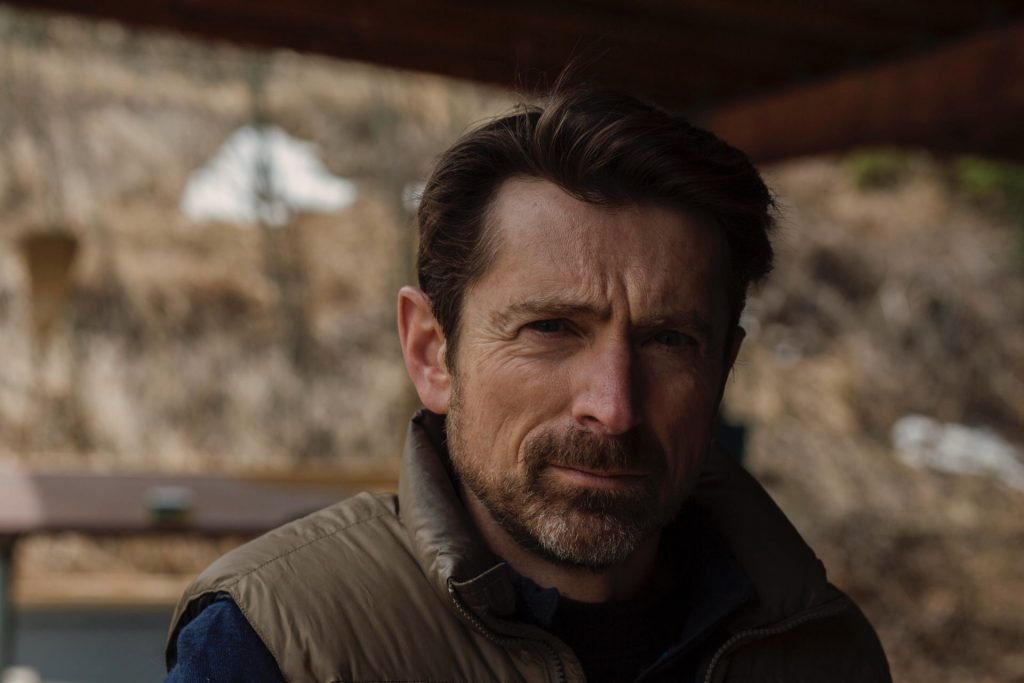
Risks of nuclear
Where the conversation really gets heated, though, is on the topic of risks. Keith, for one, is adamant that nuclear brings lower risk than most people imagine.
“The most exposed to workers at Fukushima got about half a Siebert dose each. What does that mean? That means about a one per cent increase in your 30-year cancer risk,” he says.
May, on the other hand, is skeptical. “We don’t know for sure what the, the total impact of Fukashima is.”
“After Three Mile Island, there were big disputes over how much cancer was created. Dr. John Goffman wrote a book detailing how many people died…from cancers. And there were people on the other side saying no one died from Three Mile Island,” says May.
The potential risks are, in other words, not fully understood. But with nuclear again entering the conversation, and with Saskatchewan beginning to consider it as a real option for new investment, the question becomes, What is the role of nuclear in building a low carbon grid?
“Do we, need SMRs to reach a fully decarbonized power grid? Or can we reach it instead with some combination of transmission lines, batteries, hydrogen, and all these other things,” says Hastings-Simon.
“I think it’s very unlikely that SMRs are going be the key answer to that question”—this, not least, because at the end of the day, they still leave us with environmental issues of nuclear waste and nuclear proliferation.
To nuke or not to nuke
“Nothing’s going to replace fossil fuels, like what it did to human civilization. It was a one-shot jolt from millennia ago,” says May.
To meet the unprecedented challenge of building a low-carbon energy system, May says, “You’re going to have to do a whole mix of everything you can get your hands on, starting with energy efficiency and solar and wind and geothermal and run of the river.”
The climate and energy transition plans of cities and states reflect May’s sentiment, with wide-ranging portfolios that try to do it all.
Ever the pragmatist, Keith says we likely won’t do all of these things. We should pick the few technologies that have the best chance of meeting our energy needs on our short timeline.
“If you look at the energy system later this century, it’ll be a couple of things. And my guess is it’ll be dominantly solar…[T]he big question is, is there a substantial nuclear component or not.”
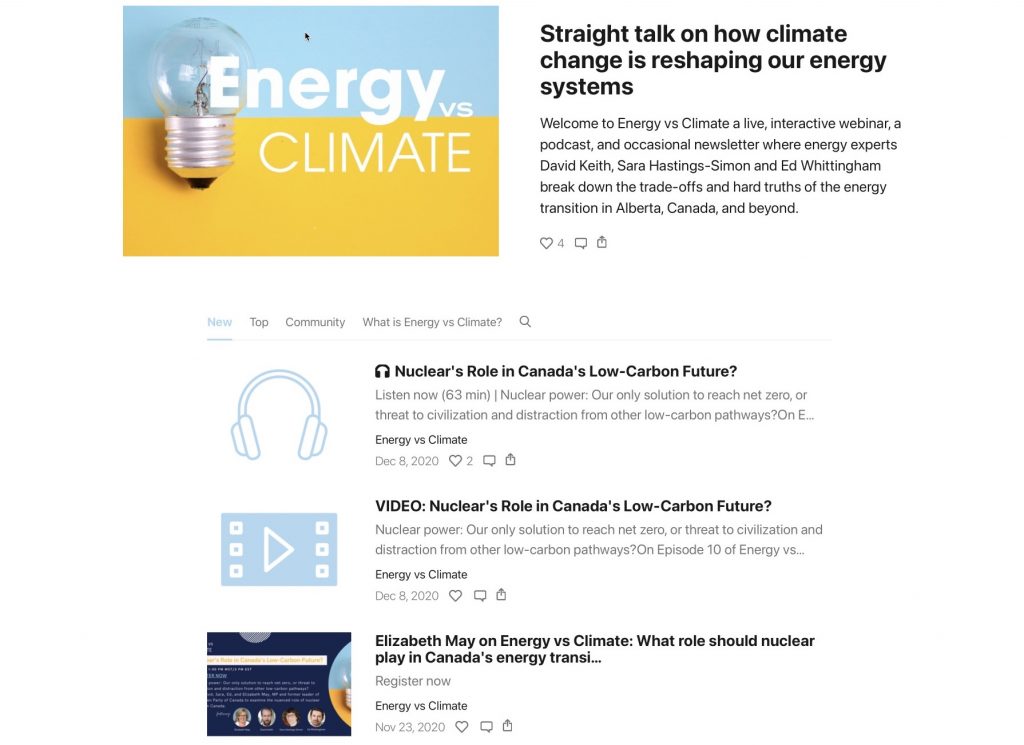
The Energy vs Climate podcast is produced live at an interactive webinar that is shared as a podcast after the original online webinar. During the program the hosts poll their pretty geeky group of listeners at the beginning and end of the show.
“All we’ve done is increased the vote of people saying nuclear will have no role,” is how Whittingham summarized the audience feedback at the end of the hour-long webinar/podcast.
It is a fascinating, often nuanced conversation about the role of nuclear in a low-carbon future held by a good mix of experts. Take a listen to the full podcast and let us know what you think the role nuclear is in building a low-carbon future.
This episode of Green Energy Futures was produced in partnership with the Energy vs Climate podcast. Whittingham, Keith, and Hastings-Simon produce a one-hour podcast bimonthly on energy transition from their base in Alberta, Canada. Listen to the Nuclear’s Role in Canada’s Low-Carbon Future episode to hear the full discussion.
